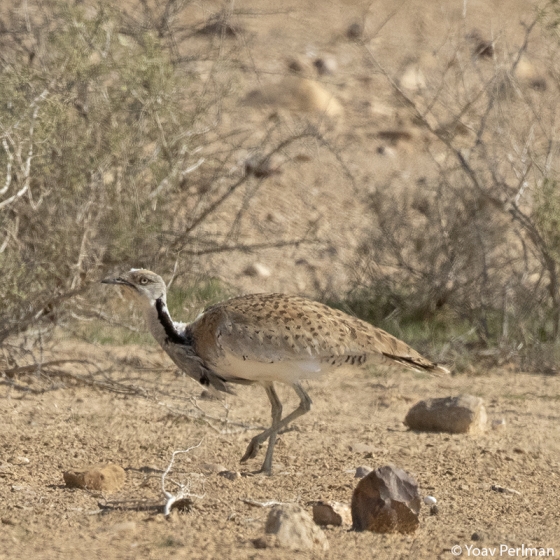Asian Houbara

Introduction
A medium sized bustard that breeds in the Middle East and central Asia, and for which just one of the handful of accepted records comes from the modern era.
Western breeding populations of this species are sedentary, but eastern populations are migratory, crossing the Himalayas in the process.

Key Stats
Status and Trends
Conservation Status
Population Size
Population Change
Population trends of this scarce species are not routinely monitored.
Distribution
This vagrant has not been recorded in the UK for many decades and as such cannot be mapped.
Distribution Change
This vagrant is too rarely reported to map distribution change.
Seasonality
This species has been too rarely reported to BirdTrack during 2011–22 to properly assess seasonality.
Movement
Britain & Ireland movement
Biology
Survival and Longevity
Survival is shown as the proportion of birds surviving from one year to the next and is derived from bird ringing data. It can also be used to estimate how long birds typically live.
Classification, names and codes
Classification and Codes
- Order: Otidiformes
- Family: Otididae
- Scientific name: Chlamydotis macqueenii
- Authority: JE Gray, 1832
- BTO 5-letter code: HOUBU
- Euring code number: 4442
Alternate species names
- Catalan: hubara asiàtica
- Czech: drop hrívnatý
- Danish: Østlig Kravetrappe
- Dutch: Oostelijke Kraagtrap
- Estonian: aasia kraetrapp
- Finnish: idänkaulustrappi
- French: Outarde de Macqueen
- German: Steppenkragentrappe
- Hungarian: pettyes túzok
- Icelandic: Macqueendoðra
- Italian: Ubara asiatica
- Latvian: apkakles siga
- Lithuanian: Makvenio einis
- Norwegian: Steppetrappe
- Polish: hubara arabska
- Portuguese: abetarda-de-macqueen
- Slovak: drop hrivnatý
- Slovenian: ovratnicarska droplja
- Spanish: Avutarda hubara asiática
- Swedish: kragtrapp

